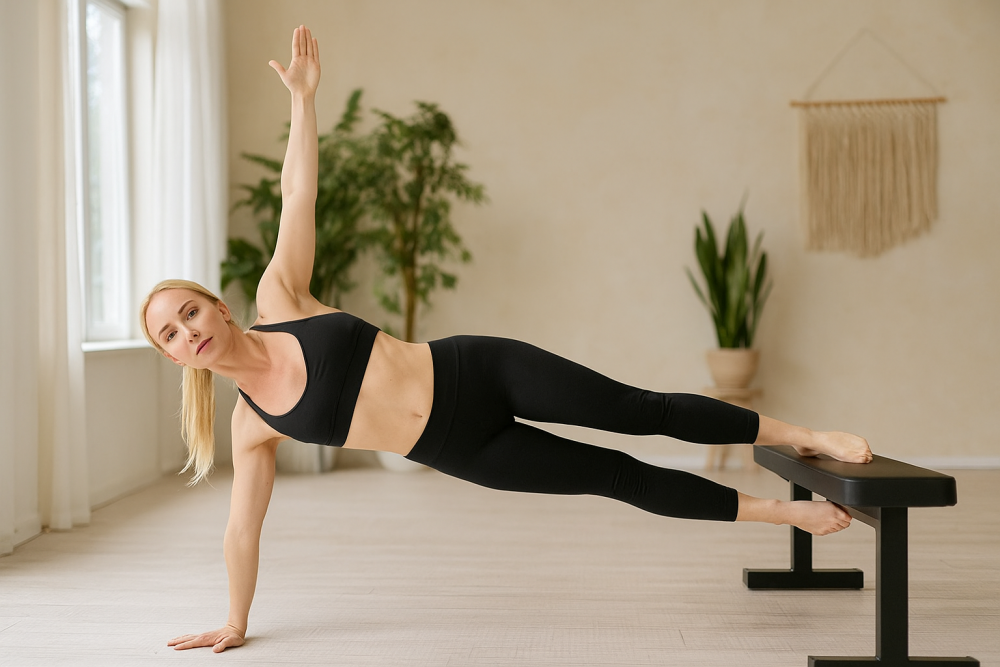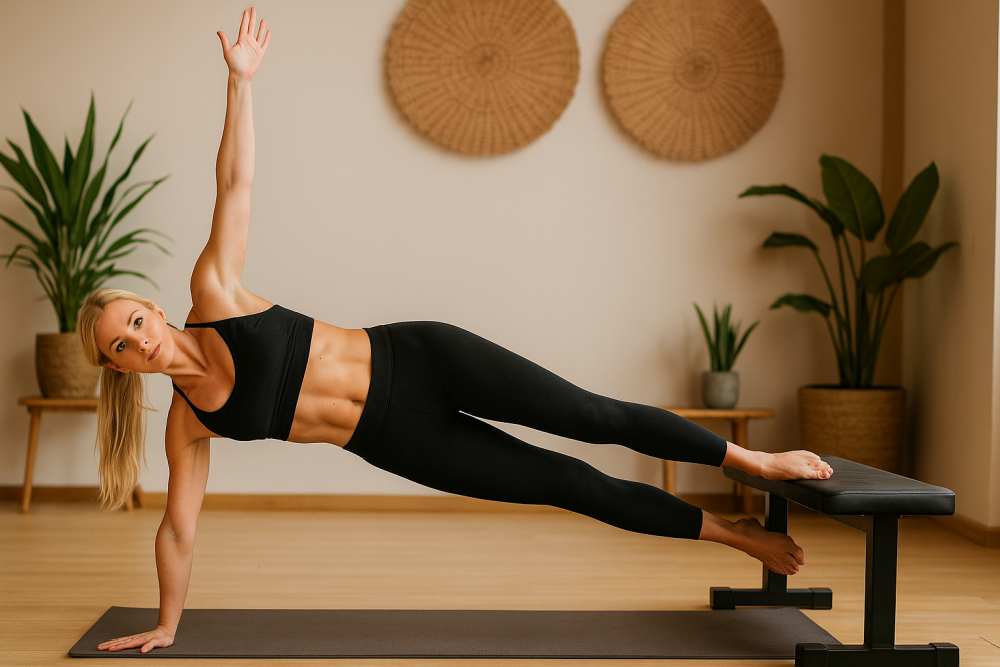Contents
- 1 The Copenhagen Plank
- 1.1 A Comprehensive Guide
- 1.2 What Makes the Copenhagen Plank So Effective?
- 1.3 Copenhagen Plank Benefits
- 1.4 Muscles Worked
- 1.5 Recommended Set
- 1.6 Copenhagen Plank Step-by-Step Guide
- 1.7 How to Do the Copenhagen Plank
- 1.8 How the Copenhagen Plank Differs from Other Planks
- 1.9 Recommendations
- 1.10 Conclusion
- 1.11 Related
The Copenhagen Plank
A Comprehensive Guide
When it comes to building core strength, the traditional plank is a staple exercise for fitness enthusiasts. But if you’re ready to elevate your routine, the Copenhagen plank offers a unique twist, providing specific benefits that make it an excellent addition. This variation challenges the body in ways other plank exercises don’t, focusing on muscle groups that are often overlooked. I recently began incorporating the Copenhagen plank into my routine and have noticed substantial gains in stability, strength, and injury prevention. Here’s why the Copenhagen plank is a powerful move worth mastering.
What Makes the Copenhagen Plank So Effective?
The Copenhagen plank is particularly effective for targeting the adductors (inner thigh muscles) along with the core, challenging stabilizing muscles that aren’t as engaged in a regular plank. When performed correctly, this exercise builds functional strength that translates well to daily movements and sports, where balance, agility, and injury prevention are essential.

Copenhagen Plank Benefits
- Strengthens the Adductors
This plank specifically targets the adductor muscles, which play a crucial role in stabilizing the hips and knees. Strong adductors are especially important for athletes who perform sudden lateral movements, such as those in soccer, hockey, and basketball. By strengthening these muscles, the Copenhagen plank can help reduce the risk of groin and knee injuries while improving side-to-side stability. - Improves Core Stability and Balance
Beyond working the inner thighs, this plank challenges core muscles in a new way, as you maintain stability in an asymmetrical position. This added demand on the obliques, glutes, and lower back muscles not only builds core strength but also enhances balance, making it a great choice for those looking to improve functional strength and stability. - Supports Better Posture and Reduces Lower Back Pain
A strong core is foundational to good posture and spinal health. By engaging the full core in this plank, you strengthen muscles that support your spine and alleviate strain on your lower back, which can help reduce back pain over time. - Boosts Athletic Performance
For athletes, the Copenhagen plank strengthens the muscles involved in lateral movements, making it highly beneficial for improving agility, coordination, and power. The combination of core and adductor engagement also translates to improved endurance and efficiency in physical activities, enhancing performance and resilience.

Muscles Worked
The Copenhagen plank primarily targets:
- Adductors: The inner thigh muscles that are often neglected in traditional workouts.
- Obliques: The muscles on the sides of your abdomen that help with twisting movements.
- Rectus Abdominis: The “six-pack” muscles on the front of your abdomen.
- Transverse Abdominis: The deep core muscles that stabilize your spine.
- Glutes: The muscles in your buttocks, which are engaged to maintain hip stability.
Recommended Set
For optimal results, I recommend starting with 2-3 sets of 20-30 seconds per side. As you get stronger, you can gradually increase the duration to 45-60 seconds per side.
Copenhagen Plank Step-by-Step Guide

How to Do the Copenhagen Plank
- Begin by lying on your side with your forearm flat on the ground, shoulder directly above your elbow. Place your top leg on an elevated surface, such as a bench or sturdy chair, so that your foot and inner thigh are resting on it.
- Extend your bottom leg straight out, hovering just above the ground or with the knee bent and supported under the top leg.
- Lift your hips until your body forms a straight line from head to toe.
- Engage your core, glutes, and inner thigh of the top leg to maintain the position.
- Hold this position for a set duration or as long as you can while keeping form. Switch sides to ensure both legs are worked evenly.

How the Copenhagen Plank Differs from Other Planks
Unlike traditional planks that primarily target the core, this plank places a significant emphasis on the adductors. This additional focus on the inner thighs makes it a more comprehensive exercise for lower body stability. Additionally, the Copenhagen plank requires balance and coordination, challenging your body in a way that standard planks do not.
Start by holding for 10–15 seconds on each side and work up to longer holds as your strength improves.
Recommendations
- Start Slowly: If you’re new to this exercise, begin with a shorter duration and gradually increase the time as you build strength.
- Proper Form: Maintain a straight line from head to toe to avoid unnecessary strain on your back.
- Breathing: Remember to breathe steadily throughout the exercise to maintain stability and avoid holding your breath.
- Progressive Overload: As you get stronger, consider adding resistance, such as a light weight on your top hip, to further challenge your muscles.
Conclusion
The Copenhagen plank is a powerful addition to any workout routine, offering unique benefits for both core and lower body strength. By targeting the often-overlooked adductors, this exercise helps improve overall stability, reduce injury risk, and enhance athletic performance. Start incorporating the Copenhagen plank into your workouts today and experience the difference for yourself. Your core and inner thighs will thank you!
Follow our Social Media!








